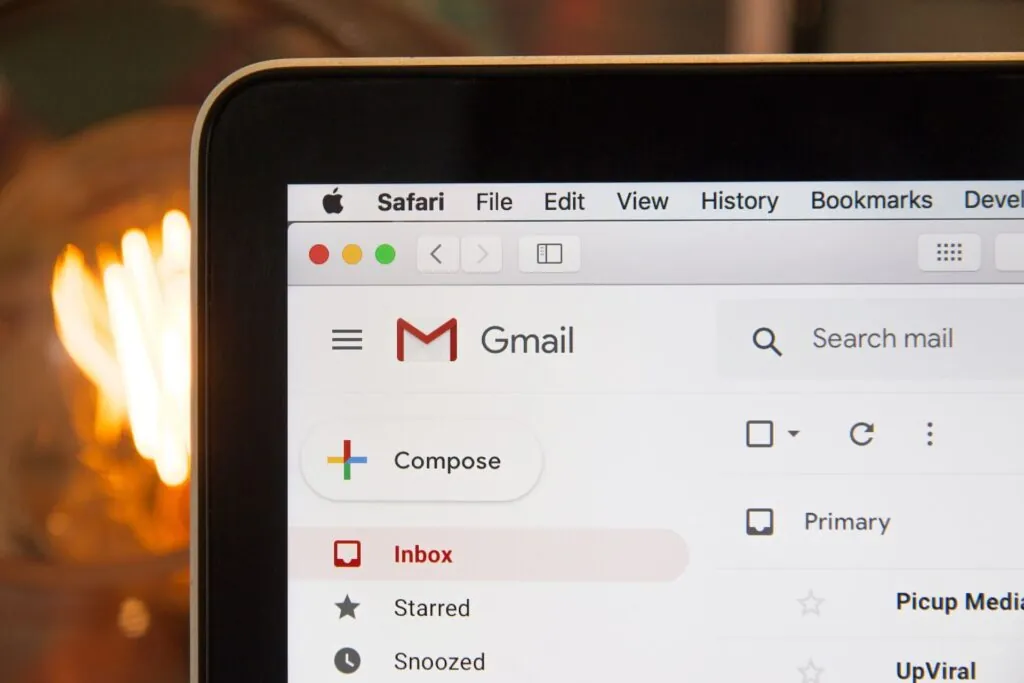7 Reasons Why Your Email Marketing Strategy Is Not Working
Crafting a stellar email campaign is a simple yet effective way of nurturing B2B leads and converting them into sales. Get it wrong, however, and that’s a lot of time, energy and potential wasted on something bound for someone’s spam folder.
Email marketing is an essential tool for B2B companies. It’s important to know how to create emails that grab attention, get opened and begin lasting relationships.

In this article, we’ll go over the most common B2B email marketing mistakes and what you can do to avoid them.
7 reasons why your B2B email marketing strategy isn’t working
If you’re struggling with B2B marketing email open rates or click-throughs, here are some things you might be getting wrong.
1. Using B2C email tactics
There are some similarities between B2C and B2B sales strategies – but there are a lot of differences.
Both can utilize sales channels like email and social media to nurture leads, increase sales, create brand awareness, and educate customers about products and industry news. When crafting a B2B email marketing campaign, it’s important to understand that the sales cycle and audience differ and that your email marketing strategy should reflect that.
A B2C email marketing campaign generally consists of hundreds or thousands of emails going out to a wide audience. Whilst customer research is recommended, it’s nowhere near as in-depth as a B2B email marketing strategy.
B2B sales emails generally reach a smaller audience, are much more tailored, require more personalized research, and involve a lot of direct communication. For instance, if you’re selling an AI virtual assistant for business, you shouldn’t talk about its general benefits. Instead, you want to hone in on what it could do for the one specific company you’re talking to. Pitching to an insurance company might involve highlighting its ability to pull detailed quotes and reduce the time agents need to spend gathering information, while for an ecommerce company, you might focus on how it can reduce call center queues by resolving basic queries.
Many companies will apply the more well-known B2C email marketing strategies to B2B sales, but this is a mistake and will only waste your time, hard work, and money.
2. Lack of personalization
Personalization is important in any email marketing strategy, but it’s essential in B2B sales emails.
When you’re reaching out to an organization, you should know:
- Details about the company
- The industry they operate in
- The pain points of that industry
- The main B2B decision-makers within the company
You should be able to show your research to the people you’re reaching out to. Personalization grabs the recipient’s attention and makes them feel valued.
If you’re a company that develops a PBX system for small businesses, reaching out to a global car manufacturing corporation isn’t going to get you anywhere. Similarly, if you’re sending your sales emails to people who have no stake in company decision-making, you’re wasting your time as well as theirs.
A lack of personalization looks like you’ve put no thought into your outreach, which will turn off prospective buyers.
3. Bad timing
Timing is everything when it comes to B2B sales emails.
If your email is buried under two dozen other emails and left to sit in someone’s inbox over the weekend, it’s probably going unnoticed – and unopened.
Hubspot reported that 47.9 percent of email engagement happened between 9 a.m. and 12 p.m. and that the best day to send any marketing email was Tuesday.
However, as useful as this data is, it’s important to note that different businesses operate on different schedules and time zones. Many businesses also make their purchases at certain times of the year, so knowing that will help you reach out at the right moment. Doing your own research is a must, as you may note different trends within the industry you’re targeting.
Another timing mistake you might be making is how often you send emails.
If a business subscribes to you or its decision-makers reply with interest, sporadic emails sent out whenever you want to make a sale are a turn-off. They might be looking for educational content relevant to your shared industry or updates about your latest innovations. However, sending something every day would definitely be too much!
To avoid creating a one-sided relationship, create a regular email schedule containing interesting and relevant information and stick to it.
4. Spammy or irrelevant subject lines
An email subject line is the first thing a recipient sees when they open their inbox and can make or break your entire email marketing strategy. There are two main mistakes people make:
Making subject lines too long
Whether your recipient reads your marketing email on their mobile device or desktop computer, all email subject lines have a cut-off.
Making your subject line too long means not delivering your complete message.
Email apps on mobile devices generally show between 40 and 70 characters. Desktop web browsers show up to 55 characters. This puts the recommended length of a marketing email subject line between six and ten words.
Spammy subject lines
Subject lines that look “spammy” will likely get your emails marked as such. Making your marketing email subject lines overly “salesy” is also a turn-off.
You know the ones. They usually go something like: 👀👀👀 LOOKING FOR A SALE!? CLICK HERE BEFORE TIME RUNS OUT!!! 💲🤑

In B2C emails, the lines between spam and promotion are a bit more nuanced – brands can use puns, memes, and emojis to get their message across to great effect.
In B2B sales emails, the line is clearer. It’s worth avoiding things like excessive punctuation, using ALL CAPS, and pushy language like “act now” and “last chance.”
Be helpful and self-promotional without sounding like a salesperson. If your conference call software can solve business communication problems, focus on that main benefit to your recipient’s customer service woes.
5. Badly written emails
B2B marketing emails filled with misspelled words and bad grammar look sloppy and unprofessional. They show that you don’t care and will likely be condemned to the spam folder – along with the recipient’s opinion of your business.
Make sure any emails you send are proofread. Send your copy through spelling and grammar checks, and have other people read them for additional insight.
It’s not just spelling and grammar that creates readability, though. Filling emails with jargon or being overly familiar or verbose can also cause people to click away. To avoid these mistakes, follow a simple B2B marketing email formula:
- Introduce yourself and your company
- Highlight and empathize with your recipient’s pain points
- Announce your value proposition which solves those pain points
- Conclude with a call to action – this can include a request for a reply, a way to access a free trial of your product or service, a way to schedule a call, or any other steps you wish the recipient to take.
- Your signature and contact details.
Keep your email short, concise, and relevant. You can and should talk about yourself – if you’re emailing from Only Domains, don’t be afraid to mention your company by name. But don’t make it all about you; your focus should be on your customer and how your company can solve their needs.
6. Not optimizing
Recipients view their emails on a variety of devices, so it’s important to properly optimize your B2B marketing email.
The email body will display differently across different apps and devices. Certain settings can break email fonts, layouts, and pictures, turning your email into a mess of empty boxes and unreadable text.
To avoid this, thoroughly test how your emails display over a variety of apps and devices. You can do this manually by opening the email yourself or having someone else open it, or you can automate the process by using tools such as email testing software and remote desktop management.
7. Your mailing list is full of unengaged contacts
Sending emails to a mailing list with lots of unengaged contacts can lead to problems.
Email campaigns take time to craft and cost money to deliver – unengaged contacts are a waste of resources. They also skew any data you collect about your campaign since unengaged contacts no longer represent your potential customers. Plus, if your emails regularly end up in people’s spam folders, they’re more likely to get marked as spam by email providers.
In order to resolve this, you need to define what an unengaged contact is. Consider criteria like:
- Recipients that cause email bounce back.
- Recipients who haven’t opened your emails in a number of months.
- Recipients who still don’t engage after re-engagement emails.
Once someone on your email list hits the criteria, remove them from your contacts. Save for efforts for recipients who add value to your business.
Creating a successful B2B email marketing strategy
B2B email marketing is a surefire way of nurturing leads, increasing sales, and developing lasting business relationships.
But only if you do it right.
Crafting the perfect sales email only to have it go unopened is every marketer’s nightmare. So don’t let that happen. Avoid these common pitfalls of B2B email marketing strategies and use this guide to help you craft B2B sales emails that work.


